An Allhallowstide Journey to The Green Chapel
In November 2021, myself and M. D. Penman released our adaptation of Sir Gawain and the Green Knight at the Thought Bubble comics convention. When we were working on the book, one of the things we always intended to do but never got around to was to visit Lud’s Church together. Now it’s November again, and Mark and I are getting ready to take part in a panel at Thought Bubble all about adapting medieval sources into comics. So, better late than never, on the 2nd of November 2025, we finally made the trip Staffordshire together.
 A Strange Season
A Strange SeasonIn Western Christianity, Allhallowstide is a triduum (three-day period of religious observance) lasting from the 31st of October until the 2nd of November; Hallowe’en, All Saints’ Day, and All Souls’ Day. In Mexico, Día de los Muertos is celebrated on the 1st and 2nd of November, sometimes also incorporating the 31st of October. In Slavic paganism, the Autumn Dziady (“Forefather’s Eve”) is celebrated across the same three-day period. All of these November / October threshold observences are associated with the dead and the links between this world and the next. This is a time when the departed are honoured and remembered, prayed for and prayed to, and when some, for a short time, return from beyond.

Taking place on October 31st / November 1st, Samhain is the Gaelic festival marking the end of the harvest season and the beginning of the darker half of the year. The medieval Irish text Macgnímartha Finn (“The Boyhood Deeds of Fionn”) records that “the fairy-mounds of Ireland were always open about Samain; for on Samain nothing could ever be hidden in the fairy-mounds”. Another medieval Irish text, Acallam na Senórach (“Tales of the Elders of Ireland”), records that the cave of Cruachan, in County Roscommon, served as a portal to the Other World, from which “certain pigs of paganism”, a trio of female werewolves, and other strange, supernatural creatures, were said to have emerged on different Samhains. Such writings have long been taken as evidence that Samhain was believed to be a time when the barrier separating the human realm and the Other Realm – the place of the Fae, the dead, and other paranormal beings – was somehow at its weakest.
In short, the period between October 31st and November 2nd is widely regarded as a time when ghosts, faeries, and monsters are abroad, especially in certain places. Some so called fairy mounds are in fact prehistoric remains. Extant Neolithic burial sites in Ireland – such as the Hill of Tara, and the Mound of Hostages, in County Meath – are believed to have been deliberately aligned with the Samhain sunrise, meaning that this time of year has held significance for many thousands of years. Other of these supposed liminal sites are natural formations or quirks of the landscape.
History, Myth, and MysteryLud’s Church, also known as Ludchurch, is a chasm in Back Forest, Dark Peak, towards the southwest fringe of the Peak District National Park. The age of the rift is unknown, but it’s believed to be post-glacial, and therefore no more than 10,000 years old. Staffordshire folklore says that the scar was made when the Devil scraped a gnarly talon across the landscape. Guidebooks and locals alike will tell you that it was a place of Druidic or Pagan worship long ago, and that Robin Hood and Friar Tuck, and even Bonnie Prince Charlie hid out there for a time. Legends Of The Moorlands And Forest In North Staffordshire (1860) contains a weird entry stating “until a few years ago, the subterranean cavern which issues from Lud’s Church, was inhabited by a strange and distinct race of beings“.
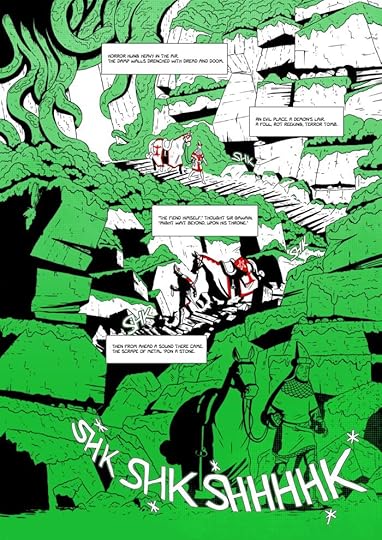
In the early 15th century, the chasm was definitely used as a place of worship by a proto-Protestant group called the Lollards (forbearers of the Church of England). Prior to Henry VIII’s Reformation, the Lollard’s beliefs were deemed hertical, and so it was necessary for them to meet and worship in secret. At one time the congregation was led by the zealous Sir Walter de Lud-Auk. Sir Walter was arrested while preaching there, and this is said to be origin of the name Lud’s Church.
During the latter half of the 19th century Lord Phillip Brocklehurst owned the land on which Lud’s Church stands. Brocklehust turned the site into something of a Victorian tourist attraction, charging visitors an entry fee, and most of the rough stone steps leading to and from the fissure date from his time. Perhaps surprisingly, the Lord also had part of the structure dynamited in an attempt to seal one of its entrances. This ultimately failed, but the explosion was apparently successful in sealing off a narrow subterranean cavern in which Sir Walter de Lud-Auk may have once lived. Notably, this was the same cave that “strange and distinct race of beings” mentioned in that guidebook less than a decade earlier were supposed to have inhabited. [For some eerily similar North West England lore, see: Crank Caverns]
Can this be the Chapel Green?“Sir Gawain in Staffordshire: A Detective Essay in Literary Geography” was the title of an article published in The Times in May 1958. In the piece professor and runologist Ralph Warren Victor Elliot first put forward his theories about Lud’s Church as a possible location for the Green Chapel of the poem. Elliot later expanded upon these in “The Gawain Country: Essays on the Topography of Middle English Alliterative Poetry“, published by Leeds University in 1984. Sadly, though both works are cited left right and centre, I have been unable to find either online or in print.
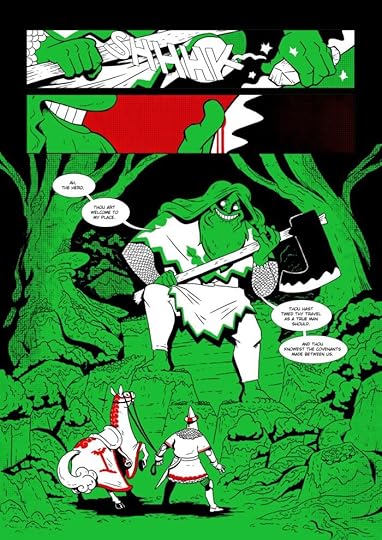
While written in Middle English, Sir Gawain and the Green Knight nevertheless contains some dialect words which a number of scholars (Elliot included) believe to be proof of its Staffordshire origins. Others argue that its author was more likely from Cheshire, not least because of Sir Gawain’s crossing of the wyldrenesse of Wyrale (“wilderness of the Wirral“) early in the poem. Whatever the truth of the unknown author’s county of origin, Lud’s Church has become synonymous with The Green Knight’s Green Chapel in the minds and hearts of many.
The poem’s description of that dreaded meeting place seems, to many, a perfect representation of Lud’s Church.
on both sides high steep banks,
and rough hunched crags with projecting stones;
the shadows of the cliffs seemed to him terrible.
But soon, a little distance off on a grassy spot he descried a mound
as it were, a smooth hill by the bank of the stream
near a ford of the flood that ran there.
The burn babbled there as if it were boiling.
The knight urges his steed, and comes to the hill;
It had a hole at the end and on either side,
and was overgrown with grass in clumps everywhere,
and was all hollow within — nothing but an old cave
or a crevice of an old crag. He could not understand it
at all.
“Alas, Lord,” quoth the gentle knight,
“can this be the green chapel?
Here about midnight the devil
might tell his matins.”
https://en.wikisource.org/wiki/Sir_Gawain_and_the_Green_Knight_(Neilson_translation)





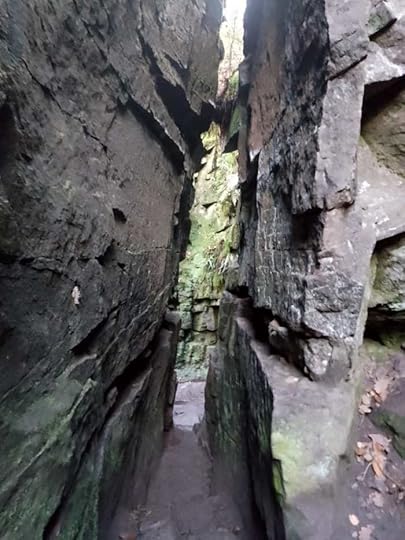


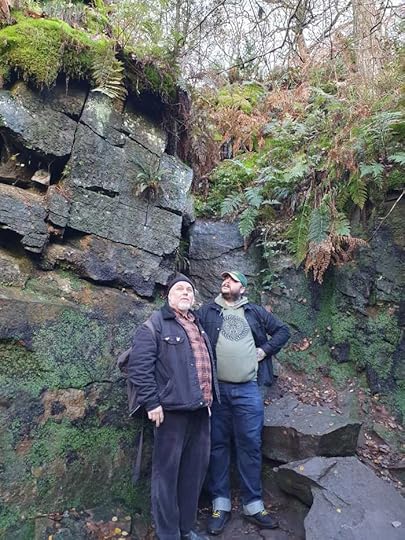
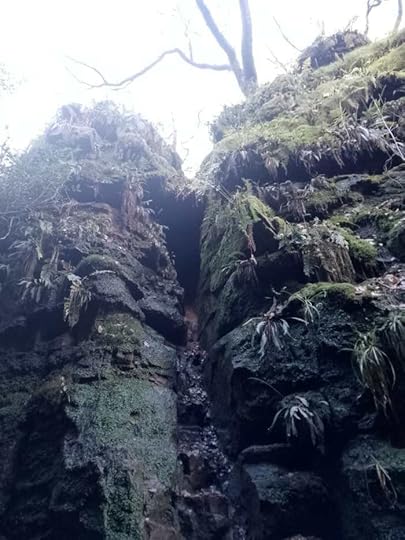
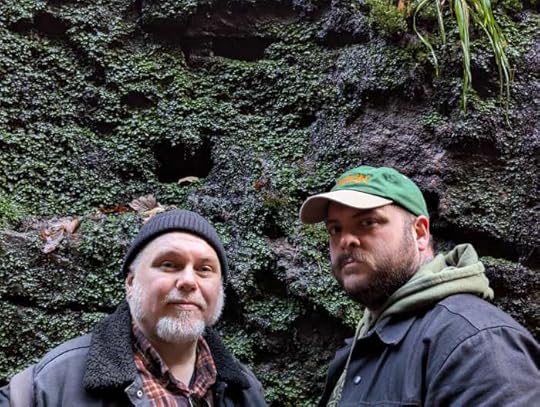
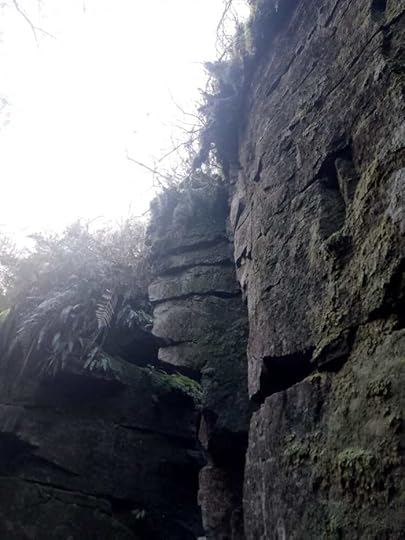
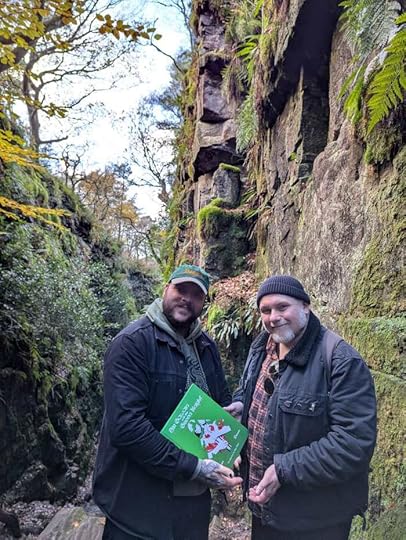
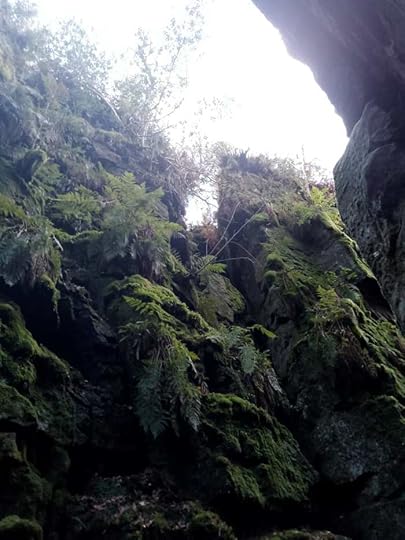
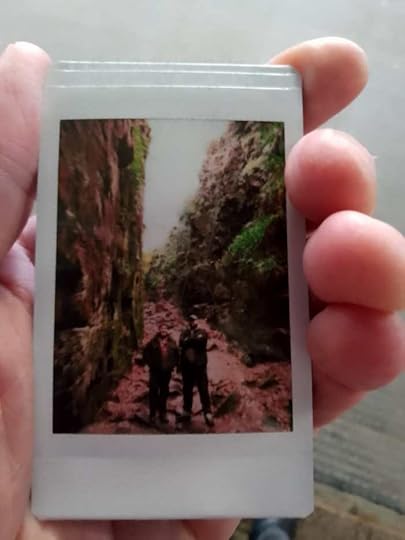
—
Further readinghttps://www.mysteriesofmercia.com/post/lud-s-churchhttps://archmdmag.com/luds-church-history-and-mythology/https://adventuresnatch.blog/2021/04/01/myths-and-mysticals-luds-church-staffordshire-and-the-peak-district/The post An Allhallowstide Journey to The Green Chapel first appeared on moorereppion.


